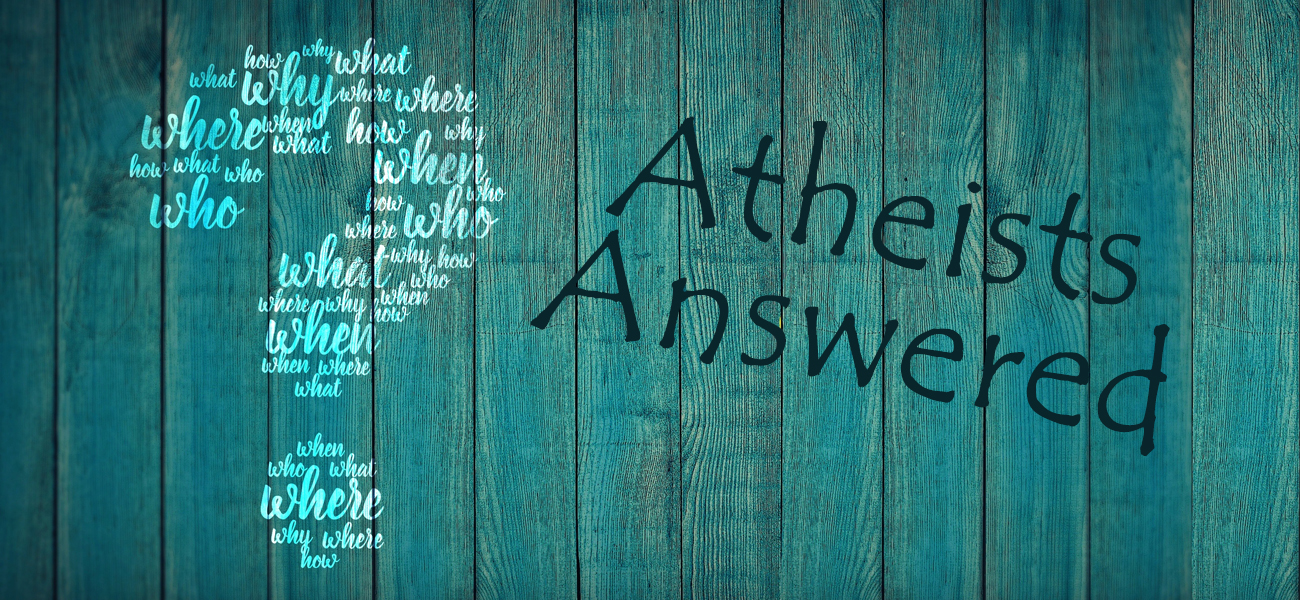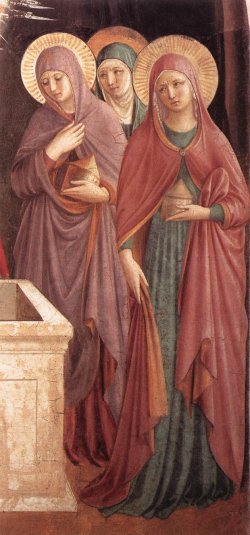Atheist's Attacks
Answering Humanist's Accusations Against the Bible


Yes, there are answers. And there are no contradictions in the Bible. There are only people who desire God to not be there... who desire to escape accountability for everything they have done wrong... who, as scripture says, know there is a god but love their sin. We cry out to you... please turn to Jesus, trusting him as your Savior from the wrath of God that will be poured out on YOU as the just penalty for breaking God's laws.
When Did The Women Get To Jesus' Tomb?
Which women got to Jesus' tomb when?
HUMANIST QUESTION: Also in the resurrection stories, there are contradictions as to the identity of the women who came to the tomb, whether the men or angels the women saw were inside or outside the tomb, whether the men or angels were standing or sitting, and whether Mary Magdalene recognized the risen Jesus when he first appeared to her.

Let's see if we can solve a murder mystery... a typical TV show type of murder mystery. A body is found in a swimming pool near a tall apartment building. The dead man had an apartment on the 20th floor, and the window facing the pool is broken. It looks like he fell through the window into the pool.
In the room with the broken window the police find the finger-prints of four people, and they interview each one separately. Each tells exactly the same story, down to the smallest details. The man was distraught and angry with the four men because a business deal had gone bad. He had smashed things in the room, throwing objects at the walls, tripping and banging his head on a lamp. The four men tried to help him, and he scratched the face of one and tore the clothes of the other. The four men went out into the hall to talk over what was happening. When they reentered the apartment, the man had apparently smashed the window with a chair and jumped to his death.
Each of the four stories was the same. Every detail matched perfectly. All four tell exactly the same story. What does the police detective do?
He arrests all four men for murder. Why? If four witnesses tell exactly the same story, they must have colluded and prepared their stories in advance. Normally with four witnesses, you get four dif-ferent stories. Each is true. However, each witness will tell the story from a different perspective, having noticed different details. That is what we have in the four Gospels as they describe the scene at the tomb on the Sunday morning after Jesus was crucified.
If the four Gospels had each recorded exactly the same description of what happened that morning, we should be suspicious. Most likely they had talked it over and agreed that would be their story, and they were sticking to it. However, instead we get what would be expected in real life... four stories... giving us four perspectives of what happened early that Sunday morning.
Not all of the women arrived at the same time. When some arrived, they immediately went off to tell the disciples, then returned to the grave. There were women coming and going. What they were seeing was shocking... unbelievable. It was a highly emotional scene. With the coming and going, some of women saw different events than others. (The angels did not just sit around as if posing for pic-tures.) What we get in the four resurrection stories is a description of the mystery, confusion, excitement, and the running around that happened that Sunday morning.
In recording the events of that morning, the gospel writers do not try to list all of the women. Each only mentions the women who are important to their telling of the story. All four do mention Mary Magdalene, who appears to have arrived first and then left to tell Peter and John. Meanwhile the other woman arrived and entered the tomb and encountered the angel, and then left to tell the disci-ples. Then Mary arrives back at the tomb with Peter and John. Peter and John leave to find the other disciples, leaving Mary alone at the tomb where Jesus appears to her.
Assuming everything took place in a calm, orderly fashion, as the humanists do, is a wrong assumption. There was confusion, peo-ple coming and going and rushing about; some disbelief; some won-der and amazement, and lots of excitement. What the four Gospels paints a realistic picture.
What did we find out here? There is no contradiction.
Next question (all accusations are direct quotes from the American Humanist web site:
As a final example of a New Testament contradiction, the conflicting accounts of Paul’s conversion can be cited. Acts 9:7 states that when Jesus called Paul to preach the gospel, the men who were with Paul heard a voice but saw no man. According to Acts 22:9, however, the men saw a light but didn’t hear the voice speaking to Paul.
THE GOOD NEWS

Before you get the good news, you need to know the bad news. It's about you. God says:
All have sinned and fall short of the glory of God. - Romans 3:23
Sin means disobeying God, aka breaking God's law. God is perfect and perfection is required to enter heaven. It's a standard none of us can achieve. We all fall short. For example, compare yourself with just one of the Ten Commandments. Have you ever told a lie?
All liars, their part will be in the lake that burns with fire and brimstone, which is the second death. - Revelation 21:8. Or what about:
Have you ever taken something that does not belong to you, no matter how small? Have you ever looked at another person with lust? In Matthew 5 Jesus said:
Everyone who looks at a woman with lust for her has already committed adultery with her in his heart.' Have you done that?
You have broken God's laws. You have sinned. There must be justice, and that means eternity in hell, the lake of fire, the second death. Unless...
Unless there was someone willing to pay that penalty on your behalf. Someone who will take on themselves the consequences you deserve. And there is. There is one person who can and will do that. That person is Jesus Christ. If you trust this is true (believe), and repent (turn away from disobeying God), Jesus' death is applied to your account and you are freed from the penalty of sin to be with God forever.
